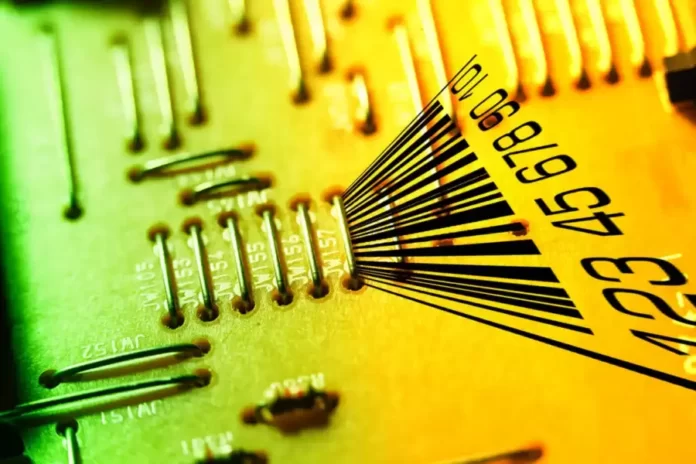Part of obsolescence management is learning how to source parts from riskier sources. For components that are currently active, you can protect yourself by only purchasing from authorized distributors. But counterfeit electronic components are a constant threat when you’re sourcing electronic components on the secondary market. The danger is especially acute for life-critical programs, where a faulty component can lead to catastrophic failure. Identifying counterfeits and protecting yourself and your programs is mission-critical.
At Secure Components, we have years of experience in counterfeit avoidance – that’s a big part of our business. We carry liability for our customers, protecting them from counterfeit materials and the loss of time and investment caused by sourcing from unknown vendors. So we’ve created our exhaustive Secure CAP (Secure Counterfeit Avoidance Plan) to prevent faulty components from reaching our customers.
Independent electronic component distributors are an important part of the war against counterfeits. In fact, in 2022 almost two-thirds of counterfeit component reports to the Electronic Resellers Association International (ERAI) were by independent distributors, with test labs coming in a distant second at about 30%.
While we can’t squeeze all of Secure CAP into a blog post, we can describe the basics of how to identify and avoid counterfeit components.
How to Determine if a Component is Genuine
- Chain of custody
Ideally, you want to source a component with an unbroken chain of custody tracing back to the OCM. Unfortunately, in the secondary market, this is rare. So most of the time, you will be dealing with components whose origins and quality are uncertain.
- Packaging (if any)
Sometimes vendors will advertise their parts as being in their original packaging. While original packaging is absolutely no guarantee of an authentic component, it can still be informative. Ask for a picture of the packaging. Does the packaging match how the part is listed? Does the label match one you know is genuine, or is something out of place? Companies sometimes change labels, so make sure this label is the one used when the component was active.
Fake packaging doesn’t definitely mean it’s counterfeit, but it’s a red flag that the vendor may not have deep knowledge of the component they’re selling.
- Visual Inspection – Eyeballing It
Some counterfeiters are really good at what they do, but others are pretty sloppy. If your part shows a misspelled manufacturer name or country of production, that’s a huge red flag.
Always have any electronic parts supplier send you an image of the component that you can compare with the genuine article. They should look the same, both in configuration and in subtler details like the typeface.
- Visual Inspection – Under the Microscope
More sophisticated counterfeits can look fine to the naked eye. So the next step is to put the component under a professional microscope to look for signs of tampering or previous use.
There are a lot of things to look for, so ideally, you have someone trained in the IDEA-STD-1010-B standard for visual inspections.
- Testing
Inspection can reveal counterfeits, but without an unbroken chain of custody, you still can’t be sure of a component’s authenticity. And if you are working on a life-critical program, you can’t afford to take a chance on any component that isn’t verified. So even when the part looks fine to you, you’ll still need to send it out to a government-approved AS6171 test facility. That is the only way to reestablish the chain of custody.
- Reporting counterfeits
Counterfeits should not be returned to the vendor – they should be removed from the supply chain and destroyed. Ideally, you’ll be working with a reputable vendor who will return your money, but that’s not guaranteed.
You may be contractually required to report any counterfeits, as is true in cases where the ultimate end user is DOD. There are two organizations key to tracking and preventing counterfeit electronic components, ERAI and GIDEP (Government-Industry Data Exchange Program). You can learn how to report fakes on their websites.
Risk Assessment
What parts are most likely to be counterfeited?
When scanning for counterfeits it’s helpful to know what components are most attractive to counterfeiters. Some parts are very popular, but others may not be worth their time.
Counterfeiters generally target broad-market, high-volume, high-usage components. Automotive or medical electronic components are popular targets, while low-volume parts for more niche programs like space are unlikely to be worth a counterfeiter’s time. If you’re using a component that has broad uses in multiple industries, it’s more likely to be counterfeited than something for a very small and specific range of products.
Sometimes parts may get very hot and counterfeits will flood the market, as when a shortage of MLCC capacitors led to a huge spike in counterfeits.
The type of components most popular among counterfeiters can change. According to the ERAI, reports of counterfeit analog IC rose from 11% to 20% between 2017 and 2022, while there was a substantial drop in reports of counterfeit capacitors. It’s best to keep apprised of these trends.
The best sources for information on what counterfeiters are targeting are GIDEP and ERAI, which you can use to research reports regarding counterfeits of specific components (if you meet their requirements).
How to Avoid Counterfeit Electronic Components
You can lower your risk of purchasing counterfeits by using reputable vendors who have consistently supplied you with authentic components over the years. But this requires investing years into working with vendors to see how trustworthy they actually are.
The simplest way to avoid counterfeits is to partner with a Trusted Certified Independent Distributor with AS9120 and AS6081 certifications that indicate they have quality management systems in place to securely source components, and have them tested at government-approved AS6171 test facilities. Independent distributors often have connections with trustworthy vendors and are familiar with the telltale signs of counterfeit parts.
FAQ
How can I be sure a part is authentic?
- If you purchase your component from an authorized dealer or the component has a chain of custody all the way back to the OCM, then you know it’s authentic.
- If there is no complete chain of custody, the only way to verify a part is to have it tested at a government-approved AS6171 test facility.
- Testing reestablishes the chain of custody.
Is it easy to tell if a part is counterfeit?
Sometimes it’s easy to recognize a counterfeit if the country of origin is misspelled or you can see that the part simply looks nothing like the authentic component. But the best counterfeits cannot be discovered without professional testing.
If I’ve purchased a counterfeit, how can I report it?
Anyone can report a counterfeit to ERAI online (www.erai.com), through email (reportparts@erai.com) or by phone (239-261-6268).
What is the easiest way to avoid counterfeits?
Working with a Trusted Certified Independent Distributor is the most straightforward way to avoid counterfeits. They do the work of counterfeit avoidance so you don’t have to.
Conclusion
Counterfeit electronic components are a major danger when sourcing parts on the secondary market.
Counterfeit components are particularly dangerous in life-critical components where high reliability is essential to avoid catastrophic outcomes.
Counterfeiters are drawn to high-volume components, especially those that have been recently obsoleted or are suffering a shortage. People desperately seeking hard to find components can be so relieved to find a part that they will order it with no questions asked.
The leading organizations involved in tracking and preventing counterfeits are GIDEP and ERAI.
If you deal with secondary electronic component vendors directly, it is up to you to report any counterfeit components you discover.
Independent Distributors in aerospace and defense should have AS9120 and AS6081 certifications indicating they have counterfeit mitigation and quality management systems in place.
With Secure Components, You’ll Always Receive Authentic Electronic Components
At Secure Components, we make sure every component delivered to our clients is authentic. A lot of those clients are working on life-critical applications in fields including aerospace, defense, and medical, so we understand how important it is to protect you from counterfeits that could cause serious damage.
We take on all the liability of counterfeits for our clients. If we source a component and it proves to be counterfeit, there is no charge to the client. We can take this risk because of our counterfeit avoidance program, Secure CAP. At the heart of this program is the database of vetted electronic component suppliers we have built over the last 15 years.
While this doesn’t remove all our risk, it does allow us to minimize risk in a way that isn’t possible without years of experience in vetting and working with vendors.
We are continually refining our vetting processes, continually reappraising vendors each time we work with them so we’re always clear on who is most trustworthy. We monitor the current counterfeiting landscape and keep up-to-date on which components are popular with counterfeiters. And we’re always transparent with our customers on whether a part is popular with counterfeiters, or whether a component is hard to find and requires us sourcing it from a vendor we have less experience with.
Because of all our precautions, we’re able to take the liability off of you and put it on ourselves. If in spite of our best efforts, we wind up with a counterfeit component, we report it, we confiscate it, we destroy it, and we eat the cost, because when you work with us, you know you’ll only pay for authentic electronic components.
That’s the Secure CAP guarantee.
Read Also: How to Use the FamilyTime App for iPhone Parental Controls?






























































